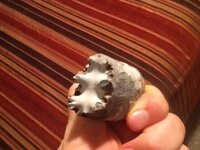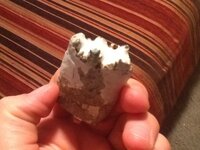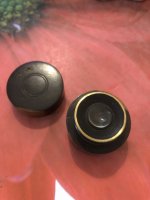wolfcouncil
Greenie
- Aug 26, 2013
- 12
- 15
- Primary Interest:
- All Treasure Hunting
Maybe someone has seen another piece like we have here. Maybe they are common, but I couldn't believe it when I found the second smaller one, a few months after finding the first.
Last edited:
Upvote
0






